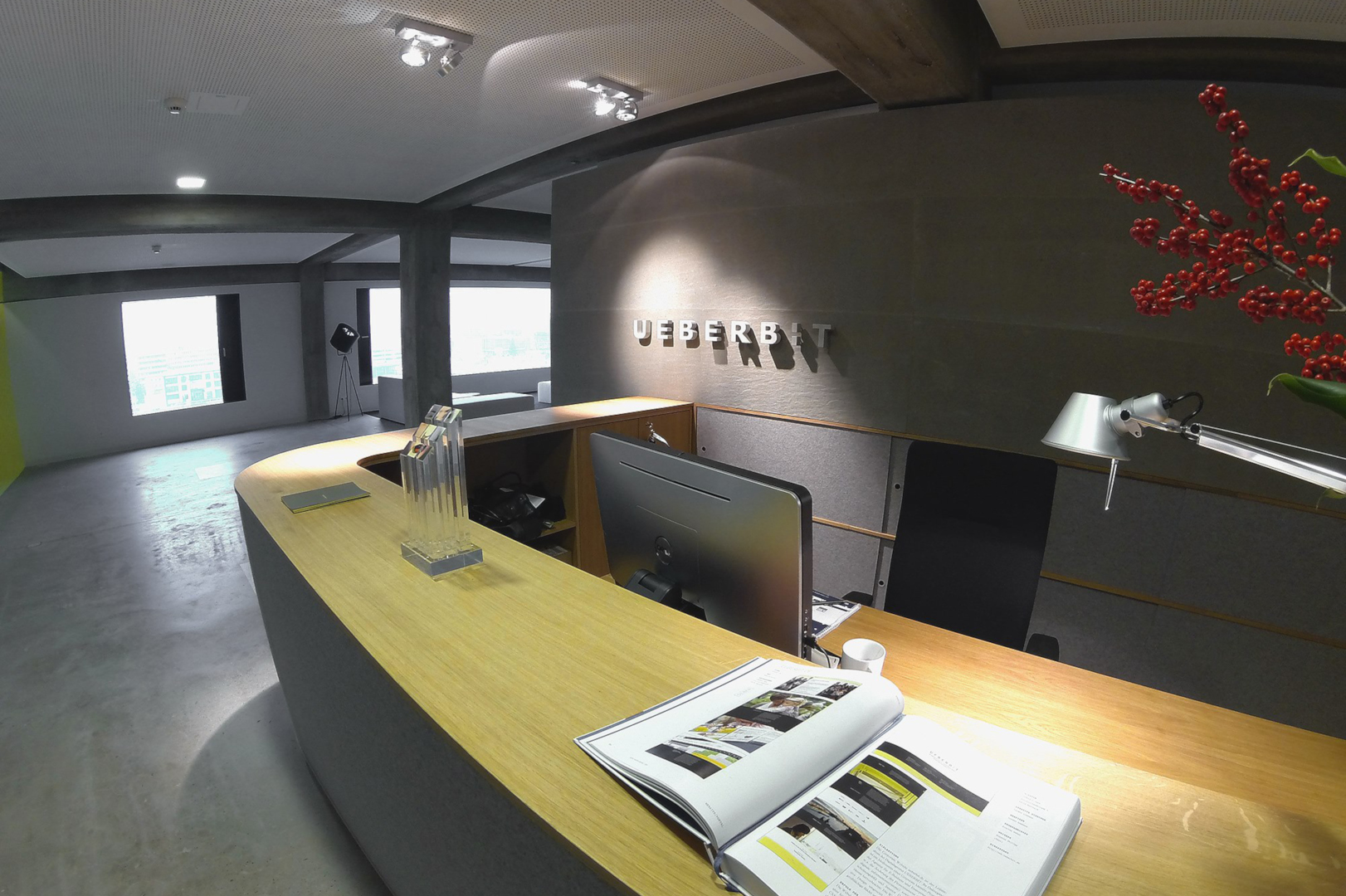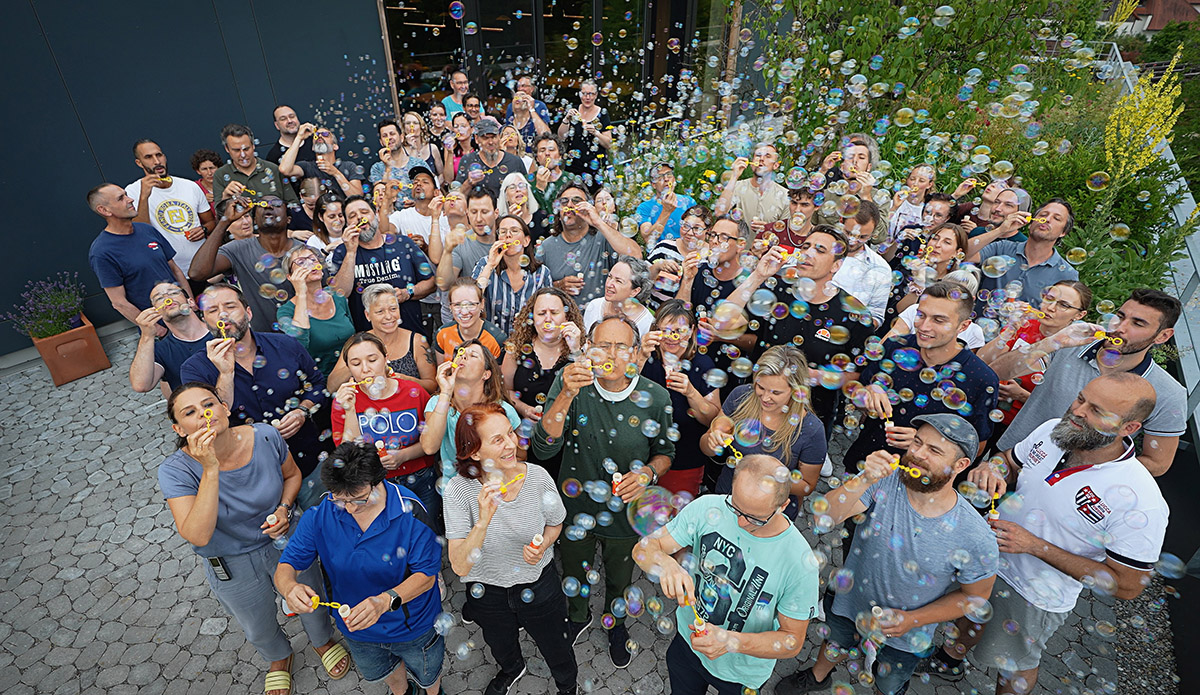UEBERBIT: The social intranet as motor for digital transformation
Text: Jessica Holzhausen I Photos © UEBERBIT

The digital transformation is a big challenge for companies and organisations. Often enough, new digital and sleek products and businesses are the main focus. But one big step is indeed a company’s own intranet, as UEBERBIT shows. The company is an expert for digital platforms and workspaces and develops individual and innovative solutions.
“The intranet shows, relatively clearly, how well prepared a company is for the digitalisation,” says Dr Boris Stepanow, who founded the Mannheim based company in 1996 together with Daniel Bönisch with whom he heads the company until today. Naturally, the digitalisation in companies is initially connected with technological topics and mainly challenges IT planners and strategists. But to just count on technology, neglects the communicative component: The digital transformation is always connected with a social and communicative change in companies. “Less top-down, a different flow of information and a bigger focus on collaboration,” says Stepanow. “At the core of companies, many things have started moving – and that has to be carried by all employees to work on a long-term basis.”
Here, the social intranet comes into play. For many companies today, it functions as main medium for internal communication – expanded by the social components of modern collaborative functions: sharing, commenting, uploading files and interacting. Employees already know these from social networks. The social intranet uses the same functions, without simply copying social networks. “It lives through the participation of employees.”
How exactly the social intranet looks, depends on companies’ individual needs: “As different as they are themselves, are the requirements for their intranet,” says Stepanow. Big, decentralised companies with offices in different cities use the intranet to share information, so that all employees always have the same level of knowledge. For smaller companies, the focus on the other hand might lie on project work and collaborating independently from sites or time zones.
Standard solutions cannot fulfil these demands. UEBERBIT therefore uses an individual approach: during the conception phase it first has to become clear what the requirements are and how the new intranet interacts with legacy systems. Future users also have to be included. ‘User centered design’ is the key term here. It has been shown that individual solutions not only work better, but because of their usability and efficiency also gain a higher acceptance. “If the introduction of the social intranet is accompanied by a good change support, a big step towards cultural change has already been made. And so the intranet can be become a driver for the digital transformation in companies.”

Das Social Intranet als Treiber der digitalen Transformation
D ie digitale Transformation ist eine Herausforderung für Unternehmen und Organisationen. Oft geht es dabei um neue, digitale und schlanke Produkte oder Geschäftsmodelle. Ein wichtiger Schritt ist aber das eigene Intranet, wie die Agentur UEBERBIT zeigt. Das Unternehmen ist ein Experte für digitale Plattformen und Arbeitsräume und liefert individuelle und innovative Lösungen.
„Am Intranet zeigt sich relativ deutlich, wie gut ein Unternehmen auf die Digitalisierung vorbereitet ist“, sagt Dr. Boris Stepanow, der das Mannheimer Unternehmen 1996 gemeinsam mit Daniel Bönisch gegründet hat und bis heute mit ihm leitet. Naturgemäß ist die Digitalisierung in Unternehmen zunächst stark mit Technologiethemen verknüpft und fordert vor allem IT-Planer und Strategen heraus. Allein auf die Technologie zu setzen, vernachlässigt aber die kommunikative Komponente: Die digitale Transformation ist auch immer verbunden mit einem sozialen und kommunikativen Wandel im Unternehmen. Weniger Top-Down, ein anderer Informationsfluss und stärker auf Kollaboration ausgerichtet, sagt Stepanow. „Im Kern von Unternehmen gerät vieles in Bewegung – was von der gesamten Belegschaft mitgetragen werden muss, um langfristig zu funktionieren.“
Und genau hier kommt das ‚soziale‘ Intranet ins Spiel. Vielen Unternehmen dient es heute als Leitmedium für die interne Kommunikation – erweitert um die soziale Komponente moderner Kollaborationsfunktionen: Teilen, kommentieren, Dateien hochladen, interagieren. All das ist Mitarbeitern bereits aus sozialen Netzwerken bekannt. Das Social Intranet nutzt dieselben Funktionen, ohne einfach soziale Netzwerke nachzubauen. „Es lebt von der Beteiligung der Mitarbeiter.“
Wie genau das Social Intranet ausschaut, hängt mit den individuellen Bedürfnissen von Unternehmen zusammen: „So unterschiedlich die Unternehmen sind, so unterschiedlich sind auch ihre Anforderungen an ihr Intranet“, sagt Stepanow. Große, dezentrale Unternehmen mit Niederlassungen in mehreren Städten nutzen das Intranet, um Informationen zu verteilen, so dass alle Mitarbeiter auf dem gleichen Wissenstand sind. Für kleinere Unternehmen steht vielleicht die Projektarbeit und standort- und zeitzonenunabhängige Kollaboration im Fokus.
Standardlösungen werden diesen Ansprüchen nicht gerecht. UEBERBIT setzt deshalb auf einen individuellen Ansatz: In einer Konzeptionsphase geht es zunächst darum, die Bedürfnisse zu klären und wie das neue Intranet mit älteren Legacy-Systemen interagiert. Auch künftige Anwender werden in dieser Phase mit einbezogen. ‚User centered design‘ ist hier das Schlagwort. Erfahrungen haben gezeigt, dass individuelle Lösungen nicht nur besser funktionieren, sondern durch Benutzerfreundlichkeit und Effizienz auch eine höhere Akzeptanz erfahren. „Wenn dann noch eine gute Change-Begleitung bei der Einführung des Social Intranets erfolgt, ist bereits ein bedeutsamer Schritt in Sachen Kulturwandel bewältigt. Und so kann das Intranet zum Treiber der digitalen Transformation im Unternehmen werden.“

Dr. Boris Stepanow und Daniel Bönisch (v. l.).
Subscribe to Our Newsletter
Receive our monthly newsletter by email




